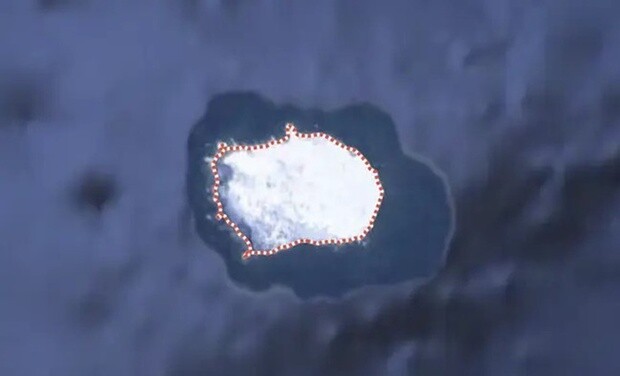So far away, this island also contains a bizarre secret that is still a controversial topic of scientists and netizens.
In the far reaches of the Atlantic Ocean, near Antarctica, there is an uninhabited volcanic island. This is perhaps the most remote and isolated island on Earth. So much so that within a distance of more than 8.1 million km2, there is no land and of course no people. People call it Bouvet Island.
The world’s “loneliest” island
According to Unilad, Bouvet Island is located in the middle of the sea between Argentina, South Africa and Antarctica. The island has been claimed by Norway. The country considers it a protected nature reserve, uninhabited and still desolate, almost completely covered in snow and ice. So it can’t be a tourist destination, even for adventurous people.
Bouvet was first discovered by the French military commander Jean-Baptiste Charles Bouvet de Lozier in 1739. The island’s name is also named after this general.

Bouvet Island is the most remote island on Earth.
However, Mr. Bouvet did not pinpoint the exact location of the island, but was deflected by 8 degrees to the east. He is said to have not circled the island, so it is not known whether it is an island or part of a continent.
In 1772, Captain James Cook set out from South Africa to find the island according to the coordinates marked by Mr. Bouvet, ie 54°S, 11°E. He found nothing and assumed that Bouvet had mistaken an ice peak for an island and gave up the search.
It was not until 1808 that the English whaler James Lindsay was found again. He was the first to mark the exact location of the island.
The closest residential area to Bouvet is the island of Tristan da Cunha. But in this place the population is also extremely sparse, only 271 people. Meanwhile, the distance from Bouvet to Tristan da Cunha is up to more than 2200km. That’s why people call Bouvet the “loneliest island” in the world.
The “ghost” boat
After Bouvet was officially on the map, another trip was made in 1964 by researcher Allan Crawford and a team of scientists. The group sets off aboard the Royal Navy’s Antarctic ice ship HMS Protector to investigate the volcanic island after a lava eruption occurred 10 years ago.
They used a helicopter to move from the ship to the mainland on the island, but suddenly, researcher Allan Crawford discovered a lifeboat lying alone in a lagoon.

It is unclear how long the boat has been there and there is no indication of where it came from or who owned it. No engines, no sails. However, Crawford also found oars on the beach along with a bronze barrel and another wooden barrel.
An inspection of the island found no trace of human life, although the canoe’s position indicated that anyone sitting on it could easily board Bouvet Island.
A few years later, the mystery became even more strange when another expedition reached the island and the canoe had… disappeared without a trace. Assuming someone has moved it to another place, it will not be easy to salvage it. It is also possible that it sank but no one can be sure without knowing the depth of the lagoon.
Decades later, the existence of the canoe on the uninhabited island remains a mystery. There were no reported missing ships that could help explain the lifeboat.

In fact, the natural conditions on Bouvet Island are very harsh. Everywhere is covered with snow and ice, and there are active volcanoes.
Only mosses and lichens are the two main plant species. Meanwhile, seals, seagulls and penguins are the only inhabitants of the island, completely devoid of people.
Bouvet is not easy to approach when it is surrounded by giant icebergs. The easiest way to get here is by helicopter.
The rugged terrain, remote location plus harsh soil conditions, this place rarely welcomes visitors to visit, but only used for research purposes.
So it is more difficult for people to find out the answer to the appearance and disappearance of the canoe. However, one Reddit user was determined to get to the bottom of the matter. This person offers one possible explanation.
In a post shared online, this Reddit user said he had consulted the documents and information on page 129 of the book of the Institute of Oceanography and obtained information that a scientific reconnaissance ship has Slava-9 began its voyage with the “Slava” whaling fleet in Antarctica on October 22, 1958, only a few years later Crawford discovered the canoe.
A group of sailors is said to have landed on Bouvet Island, but was stranded there due to deteriorating weather conditions.
The book describes how people stayed on the island for about 3 days before being rescued by helicopter. That could be why a boat was left behind.
However, it seems we will never know for sure if this is the real reason why the boat appeared on the island. It’s even harder to know how it disappeared. This is probably a question that will require a lot of time and effort of scientists.



